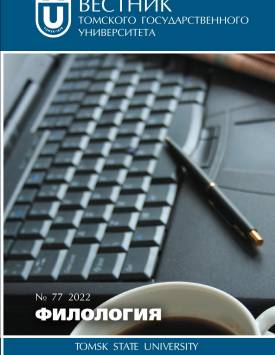Aleksandr Nikitenko as a reader and critic of the novel Who Is to Blame? by Alexander Herzen (On the material of the professor’s library)
Based on the material of Aleksandr Nikitenko’s library, the article explores the problem of his reader’s and critical perception of Alexander Herzen’s literary works. Nikitenko’s marks (by pencil and by nail) on the pages of the novel Who Is to Blame? are analyzed. Reconstruction of the reader’s reflection is preceded by the analysis of Letters about the Study of Nature, which Herzen presented to Nikitenko personally (with an inscription) and which also contain traces of a careful study on their pages. Nikitenko met Herzen in October 1846 and highly appreciated his first efforts. An enthusiastic attitude towards his works persisted until the writer’s emigration, after which a period of sharp rejection began (because of revolutionary propaganda). However, the critic’s mind forever preserved the image of Herzen as a public figure of the 1840s, which was largely facilitated by the novel Who Is to Blame? that Nikitenko perceived with deep sympathy and understanding, as shown by the content and logic of his marks. Nikitenko’s perception of the novel was prepared by his reading Letters about the Study of Nature: marks in the book reveal the critic’s philosophical like-mindedness with the author (the latter aimed to reconcile the opposites and unite them into a common goal of developing knowledge). In Who Is to Blame?, the critic saw the fulfilment of these Herzen’s aspirations to clarify the essence of human contradictions, to explain them historically and from the standpoint of modern society. The notes in the novel testify to Nikitenko’s attention mainly to two elements: the principles of artistic modelling and the problematics of the image of the protagonist. In the first part of the novel, Nikitenko marks the complex historical and philosophical nature of Herzen’s talent, namely, the biographical method of selecting material. Nikitenko refers to the law of artistic typification formulated by Herzen, which is carried out in two aspects: the generalization of ordinary material (the orientations of the “natural school”) and the principle of historicism based on the relationship between the individual and society. Emphasizing and commenting on Herzen’s thought about the people of the era, in his reading, Nikitenko follows one “extraordinary personality” - Vladimir Beltov. In Beltov, Nikitenko sees a hero of the time, possessing a “thirst for activity”, but not finding his calling. In this extraordinary interest in Beltov, Nikitenko showed the features of his romantic idealism: appreciating, in the author’s manner of Herzen, the predominantly “superfluous person”, who reflected the fate of the history of a generation in the drama. At the same time, Nikitenko, in line with his interest, was attentive to the female image, which played an exceptional role in the formation of the “Russian mind”. He examined in detail Krutsiferskaya’s diary as a kind of a socio-psychological novel about the fate of characters awakened to a new life and perishing in the conditions of Russian reality. This way, Nikitenko seemed to foresee the appearance of Turgenev’s great prose. The authors declare no conflicts of interests.
Keywords
Aleksandr Nikitenko, Alexander Herzen, Who Is to Blame?, Letters about the Study of Nature, professor’s libraryAuthors
| Name | Organization | |
| Volkov Ivan O. | Tomsk State University | wolkoviv@gmail.com |
| Zhilyakova Emma M. | Tomsk State University | emmaluk@yandex.ru |
References

Aleksandr Nikitenko as a reader and critic of the novel Who Is to Blame? by Alexander Herzen (On the material of the professor’s library) | Vestnik Tomskogo gosudarstvennogo universiteta. Filologiya – Tomsk State University Journal of Philology. 2022. № 77. DOI: 10.17223/19986645/77/7
